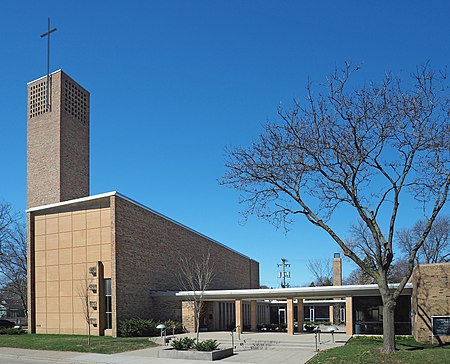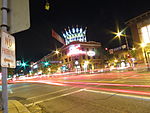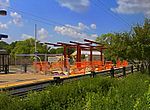Christ Church Lutheran (Minneapolis, Minnesota)

Christ Church Lutheran is a congregation of the Evangelical Lutheran Church in America (ELCA) in Minneapolis. Its buildings—a sanctuary with chapel (1949) and an education wing (1962) designed by Finnish-American architects Eliel Saarinen and Eero Saarinen—have been internationally recognized, most recently in 2009 as a National Historic Landmark by the U.S Department of the Interior. The congregation was established in 1911 as part of the Lutheran Church–Missouri Synod, but left in the 1970s as part of a dispute that led to the formation of the Association of Evangelical Lutheran Churches, which in turn was among the founding denominations of the ELCA. The Rev. Miriam Samuelson-Roberts currently serves as lead pastor, with the Rev. Erik Haaland as associate pastor. The congregation is also served by its cantors, the Rev. Robert Buckley Farlee and the Rev. Martin A. Seltz.
Excerpt from the Wikipedia article Christ Church Lutheran (Minneapolis, Minnesota) (License: CC BY-SA 3.0, Authors, Images).Christ Church Lutheran (Minneapolis, Minnesota)
East 33rd Street, Minneapolis
Geographical coordinates (GPS) Address External links Nearby Places Show on map
Geographical coordinates (GPS)
| Latitude | Longitude |
|---|---|
| N 44.943611111111 ° | E -93.223333333333 ° |
Address
Christ Church Lutheran
East 33rd Street
55406 Minneapolis
Minnesota, United States
Open on Google Maps











